Why Singapore?
Selamat datang to the Little Red Dot! If you’re dreaming of a place where gardens grow on skyscrapers, where street food stalls have Michelin stars, and where you can hop between temples, malls, hawker centers, and tropical islands all in one day, then you want to go to Singapore. At Cerca we’ve biked East Coast Park, eaten our way through hawker legends, and chilled in jungle canopies — and we’re here to share how to do it right.
Let’s get into it: here’s how to travel Singapore like you know what you’re doing. Bonus at the end — our favorite movies and series filmed in Singapore so you can get in the mood while packing.
First, the basics:
Singapore is a sovereign city-state, made up of one main island and about 60 smaller islets, perched at the tip of the Malay Peninsula between Malaysia and Indonesia. It’s one of the most global cities in Asia — and one of the cleanest and safest.

Know the Background:
Singapore began as a humble fishing village known as Temasek, then grew into a key trading post in the 14th century under the Srivijaya and later the Majapahit empires. But things really shifted in 1819 when Sir Stamford Raffles of the British East India Company landed and saw its strategic potential. Singapore became a free port, drawing merchants from China, India, and the Malay archipelago—and booming into a multicultural trading hub almost overnight. The British formally colonized it in 1824, and it remained under their rule (with a brutal interruption during the Japanese occupation in WWII) until the mid-20th century.
After briefly merging with Malaysia in 1963, Singapore broke away and became fully independent in 1965. It was a tough start—tiny, no natural resources, and full of political tension—but under founding Prime Minister Lee Kuan Yew, Singapore pulled off an economic miracle. Through rigorous planning, an obsession with efficiency, and a fierce belief in multiculturalism, it transformed into one of the world’s most advanced city-states. Today, it’s a global financial powerhouse, a sustainability leader, and a bridge between East and West—all while keeping that classic hawker center energy alive.
1. Visa Requirements: What U.S. Travelers Need
U.S. passport holders can enter Singapore visa-free for up to 90 days for tourism. Your passport must be valid for six months from your date of entry. You may be asked for proof of onward travel or accommodation at immigration.
No special vaccines are required, but check with your doctor for updates.
Pro Tip: Take a screenshot of your flight and first hotel booking. Changi has Wi-Fi, but it’s good to have a backup just in case.
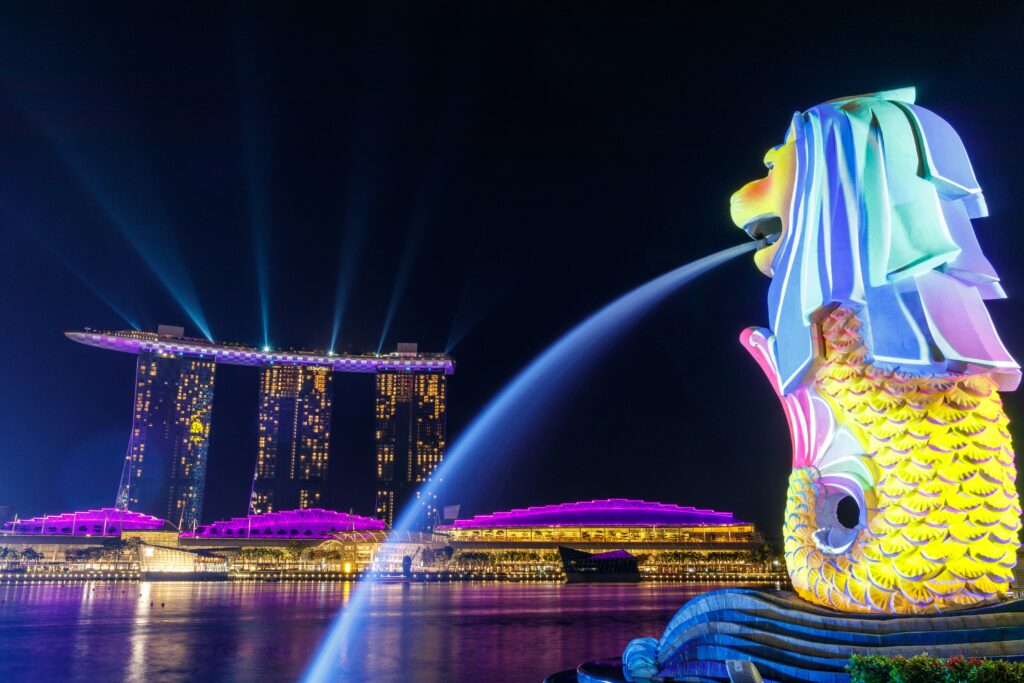
2. How Safe is Singapore for Travelers?
Singapore is one of the safest countries in the world — low crime, strict laws, and efficient emergency services. Still, petty crime can happen, especially in crowded shopping areas or on the MRT.
Check the U.S. State Department for the latest info before traveling.
For our solo female travelers…
Walking alone at night is generally safe, even in the city center. Locals are friendly, public transit is reliable, and street lighting is excellent. Dress how you like, though modesty is appreciated at religious sites.
Our Tip: Use Grab or Gojek after dark if you’re feeling unsure — both are reliable and inexpensive.
LGBTQ+ Travel…
Singapore is becoming more LGBTQ+-inclusive. Section 377A (a colonial-era law banning sex between men) was repealed in 2022, though marriage equality hasn’t arrived yet. Public displays of affection — regardless of gender — are rare but not illegal.
Advice: Queer travelers are welcome, especially in expat or artsy districts like Tanjong Pagar or Bugis. Be mindful in more conservative spaces.
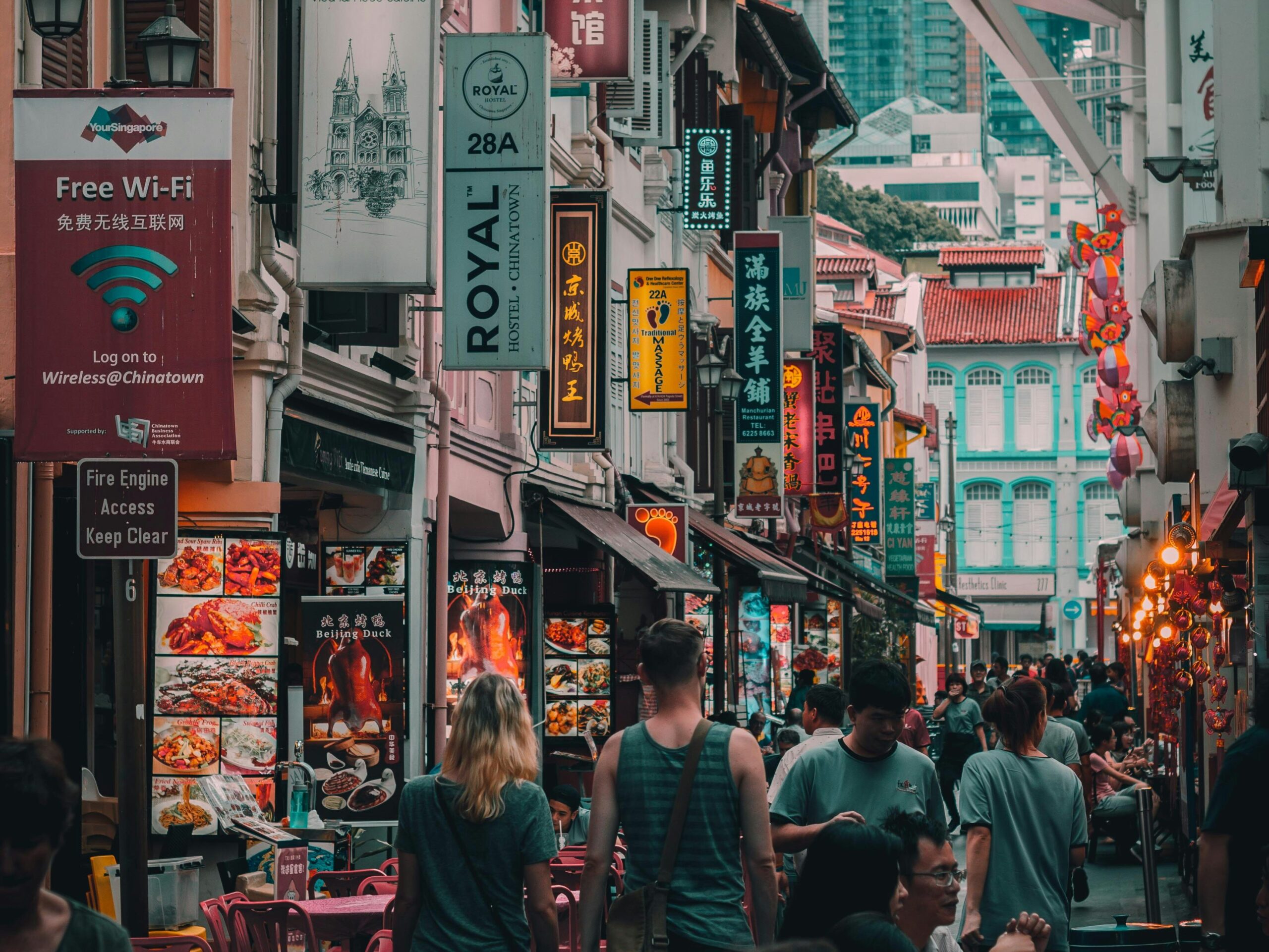
3. Cultural Experiences You Shouldn’t Miss
Singapore’s culture is a mix of Chinese, Malay, Indian, and Western influences — and it shows up beautifully in the food, festivals, and neighborhoods.
Explore a Hawker Centre
UNESCO-listed street food hubs where you can eat like royalty for $5 SGD. Try Maxwell Food Centre, Old Airport Road, or Lau Pa Sat after dark.
Wander Through Little India, Chinatown, and Kampong Glam
Each enclave has distinct architecture, history, and local shops. Visit temples, mosques, and traditional medicine halls.
Celebrate Chinese New Year or Deepavali
If your timing’s right, festivals here are spectacular — with lanterns, open houses, and street processions.
Take a Night Safari
Not just a zoo — this is a world-famous open-concept experience with nocturnal animals roaming jungle-like habitats.
Book a Peranakan Cooking Class
Learn about Singapore’s unique Straits Chinese culture through its rich and vibrant cuisine.
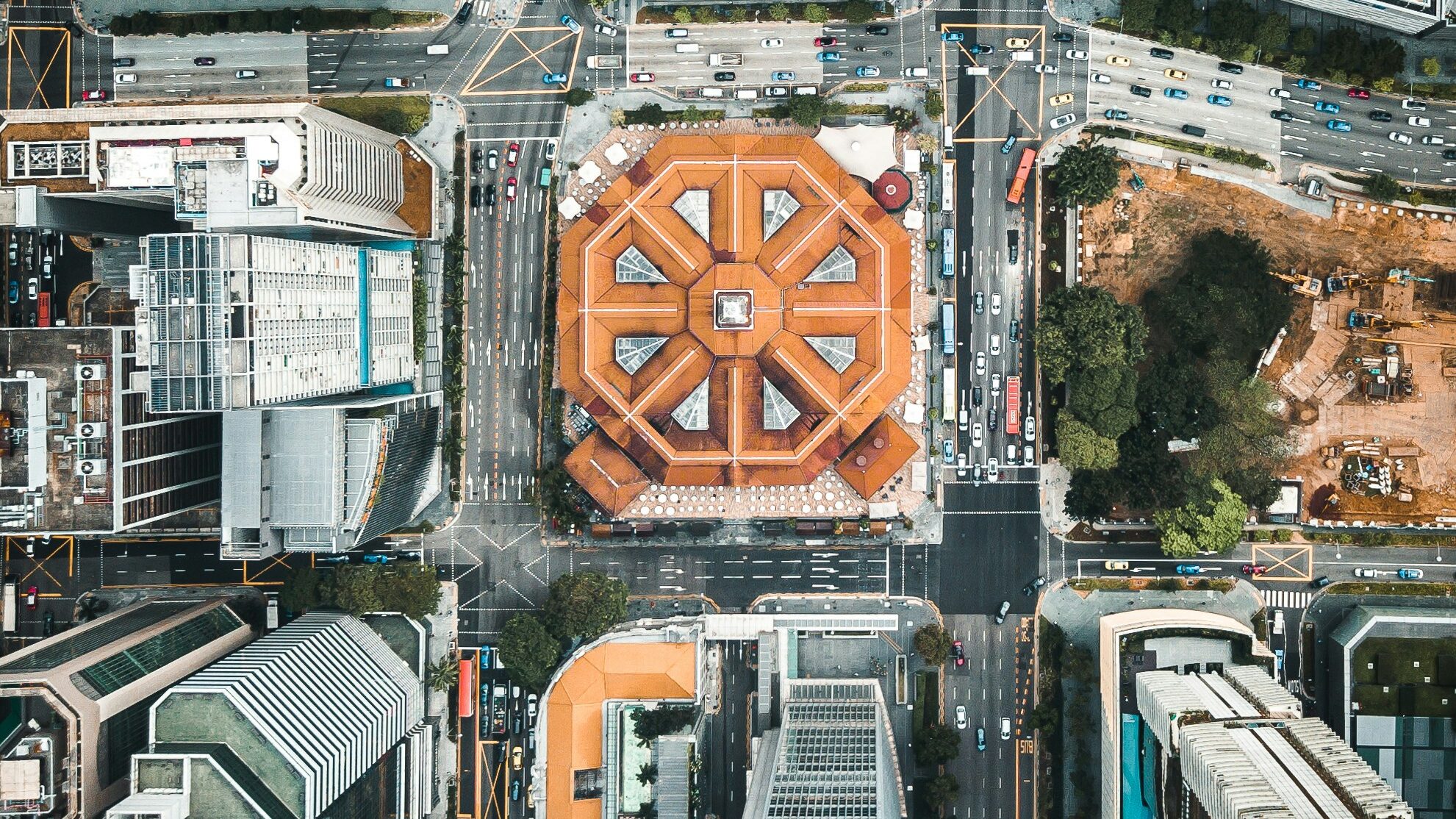
4. Money: How to Pay and What to Budget
What’s the Currency?
Singapore Dollar (SGD). $1 USD = around 1.35 SGD (check current rates).
Do You Need Cash?
Less and less. Singapore is very card- and QR-code-friendly, even at hawker stalls. That said, it’s good to have a bit of cash for small purchases or in older neighborhoods.
Digital Payments
PayNow, GrabPay, Apple Pay, and Google Pay are all widely used. Most locals scan a QR code and go.
Our Tip: Withdraw cash at local banks (DBS or OCBC). Avoid currency exchange kiosks at Orchard Road unless you check the rate first.
5. Transportation: Getting Around Like a Local
In Cities (aka the whole country)…
MRT: Clean, fast, and easy to navigate. Get an EZ-Link card or use contactless credit cards.
Buses: Efficient and good for scenic rides. Use the same card as MRT.
Bikes: Public bike shares like Anywheel are everywhere, especially in parks and along the waterfront.
To Islands…
Sentosa: Easy monorail or cable car ride from the city.
St. John’s, Lazarus, and Kusu Islands: Take a ferry from Marina South Pier.
Sustainable Note: Singapore is investing heavily in green transport — take public transit and skip car rentals altogether.
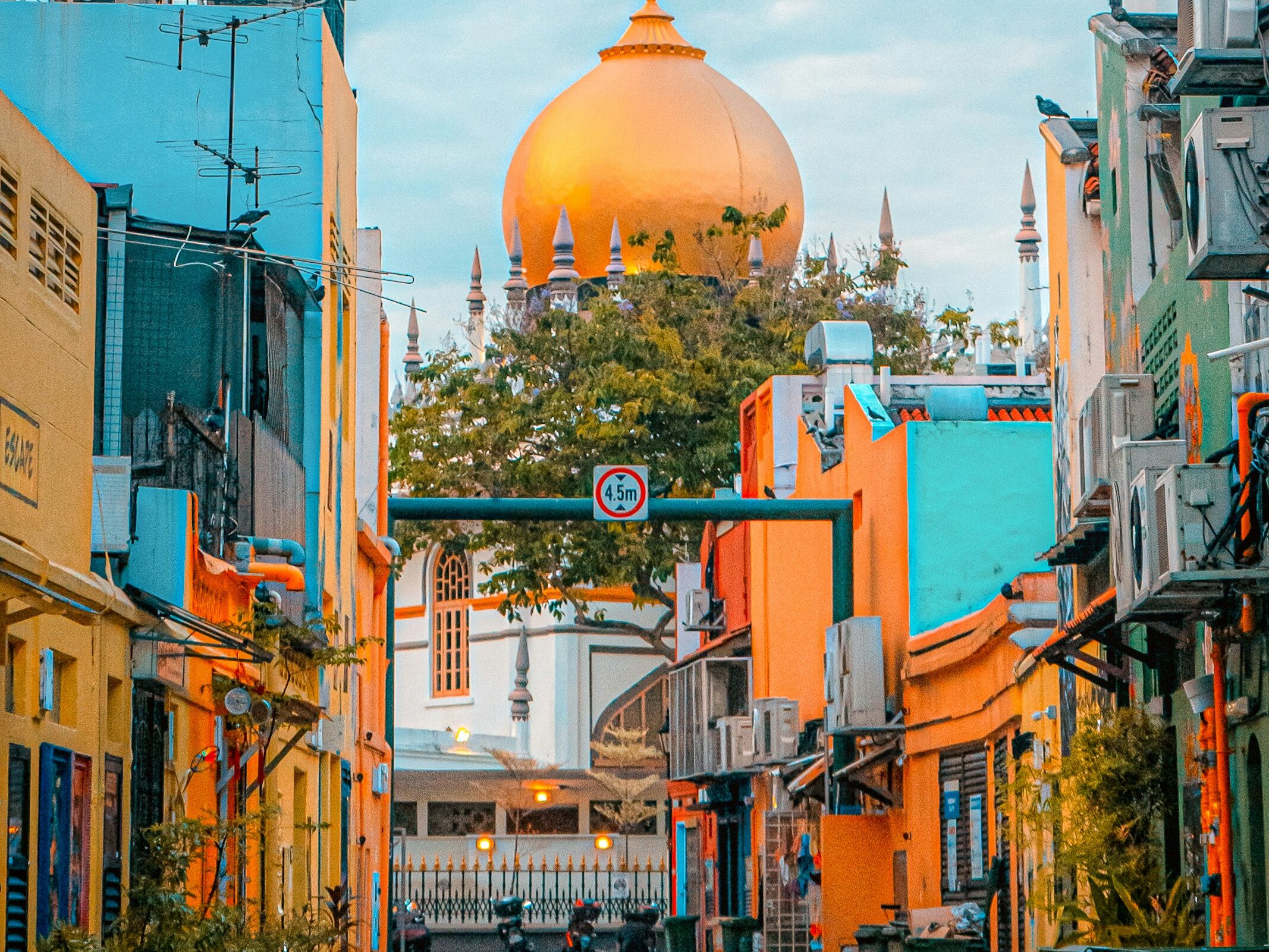
6. Neighborhoods You Should Know
Chinatown
Temples, tea houses, and street eats. Visit the Buddha Tooth Relic Temple and grab dim sum at Yum Cha.
Little India
Colorful shophouses, spice shops, and Sri Veeramakaliamman Temple. Try roti prata and teh tarik here.
Kampong Glam
Sultan Mosque, indie boutiques, and vintage cafés. Great for art, street murals, and cool fashion.
Tiong Bahru
Art deco charm, local bakeries, and laid-back bookstores. An underrated gem.
Sentosa Island
More resort than neighborhood, but worth a day or two for beaches, boardwalks, and underwater fun.
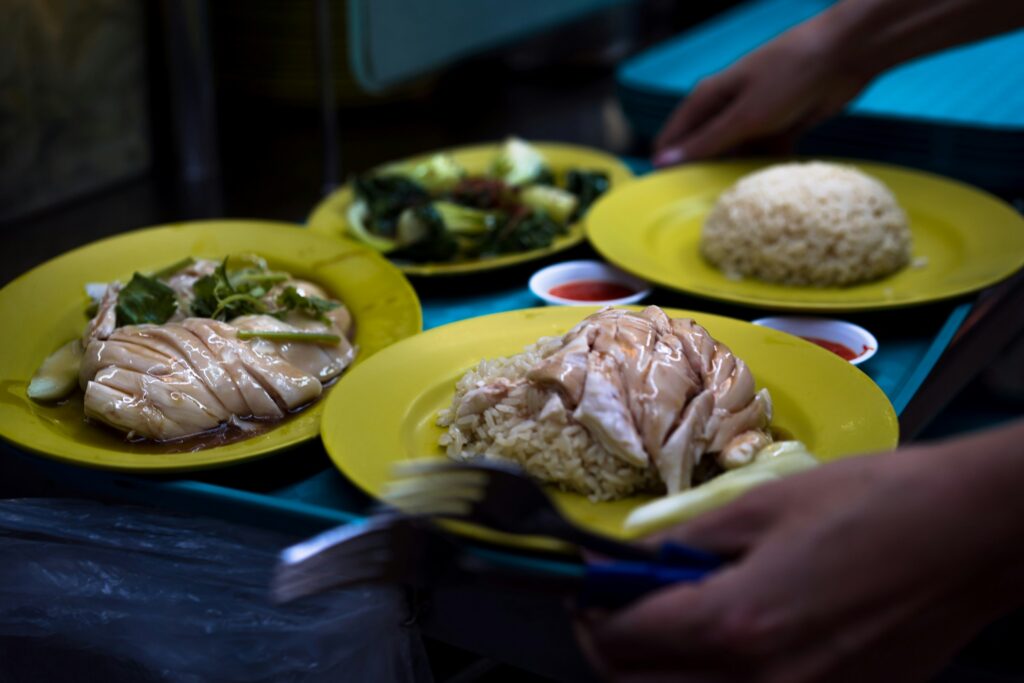
7. Food Safety: What to Eat and What to Avoid
Singapore has some of the safest food standards in Asia — yes, you can eat the street food.
Street Food Tips
Eat where the locals eat. Cleanliness is strictly enforced by the health ministry, and every stall has a visible rating.
Avoid lukewarm curries or seafood that’s been sitting out. Eat hot and fresh.
Drinking Water
Safe straight from the tap — no need to buy bottled unless you want sparkling. Free refills available in most cafes.
Sustainable Tip: Carry a refillable bottle. Refill stations are popping up all over — especially in the airport and major malls.
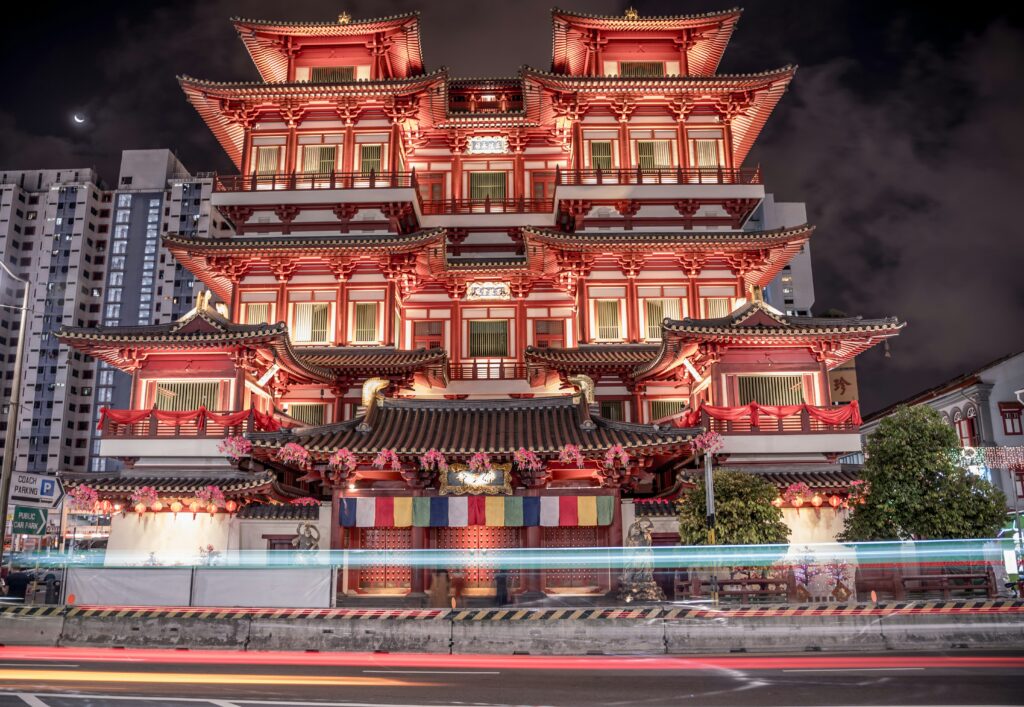
8. Respect the Culture: Don’t Be That Tourist
Dress Code
Singaporeans are stylish but modest. Sleeveless tops and shorts are fine, but cover up at temples or mosques.
Religion
A rich mix: Buddhism, Islam, Hinduism, Christianity. Be respectful — remove shoes, speak softly, and dress modestly at sacred sites.
Taboos!
Don’t litter. Seriously — you’ll get fined.
Chewing gum? Banned for import.
Don’t eat or drink on public transit.
Don’t touch anyone’s head (especially children) — it’s considered rude.
How to Order at a Hawker Center
Find a seat first — but chope it.
If you’re with a group or expecting a crowd, drop a packet of tissues, a water bottle, or even an umbrella on the table. That’s “chope-ing” — Singapore’s sacred way of reserving seats. Locals do it, tourists can too.
Walk the rows before you commit.
Some of the best food is tucked in the back or doesn’t have a long line yet. Check for the “A/B/C” hygiene rating (most are “A” or “B”) and see what looks fresh and bustling.
Order with clarity and speed.
Know what you want before you reach the front. Popular stalls move fast and the hawkers are working hard. Point to a dish if you’re unsure of pronunciation. Add “one kopi-C kosong” (coffee with evaporated milk, no sugar) if you’re feeling bold.
Pay immediately. Have cash available.
Most stalls take only cash or local payment apps like GrabPay or PayLah! Have small bills or coins ready. No tipping needed.
Self-service is standard.
Once your food’s ready (they might shout your number or the name of the dish), grab it yourself. Some places have cutlery and condiments on the side. Return your tray when you’re done — it’s polite and encouraged.
9. Packing Tips for Singapore
Light, breathable clothing (it’s always humid)
Compact umbrella or rain jacket (brief but frequent downpours)
Sunscreen (and reef-safe if you’re island-hopping)
Mosquito spray for nature parks
Power adapter (Type G, like the UK)
Modest outfit for temples
10. Travel Sustainably and Responsibly
Stay in eco-certified hotels like PARKROYAL COLLECTION Pickering
Support local brands in markets like Tiong Bahru or Kampong Glam
Avoid single-use plastic — many stores charge for bags
Skip animal shows or wildlife selfies
Respect park rules — Singapore’s wild spaces are precious
Singapore is built on sustainability — and they’re serious about making the city livable for future generations.

BONUS: Get Ready for Your Trip
Our favorite films and shows set in Singapore:
Crazy Rich Asians (2018)
Where: CHIJMES, Marina Bay Sands, Newton Hawker Centre
Go here IRL: Sip champagne at Raffles Hotel or eat at the hawker stall featured in the movie.
Westworld: Season 3 (2020)
Where: Marina One, LASALLE College of the Arts
Futuristic Singapore as a backdrop to dystopian drama.
Equals (2015)
Where: The Reflections at Keppel Bay
Sci-fi love story with sleek Singapore architecture as its setting.
Saint Jack (1979)
Where: Boat Quay and old Chinatown
Rare look at pre-modernized Singapore — moody and retro.
Shirkers (2018)
Where: All over Singapore
Indie doc about filmmaking, rebellion, and growing up in 90s Singapore.
Singapore may be small, but it’s layered, lush, and full of flavor. Whether you’re exploring the Cloud Forest, eating satay by the bay, or catching sunrise from the Southern Ridges, you’re never far from a new perspective.
So go gentle. Go bold. Go with your appetite wide open and your plastic use dialed way down.
We’ll see you out there.
— The Cerca Travel Crew